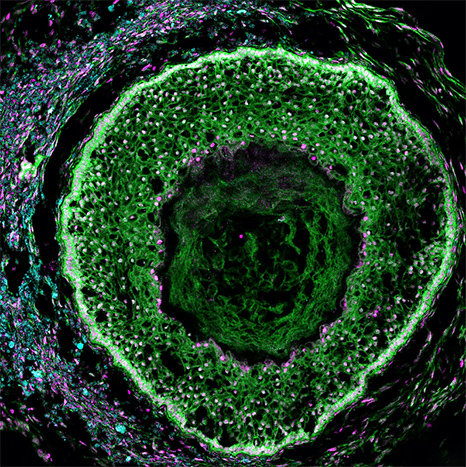Researchers at the Harvard Wyss Institute are collaborating with a biotechnology company called gameto to develop human ovarian organoids that will allow the study of reproductive and other health issues using tissues that closely mimic those in human patients. Another application may lie in allowing people with fertility issues to conceive. To date, ovarian organoids have been created using a mixture of human and mouse cells, which limits their relevance and translation to human disease. It is also a slow process to create such hybrid human/animal organoids.
This new approach involves using induced pluripotent stem cells (IPSCs) and transcription factors to create human granulosa cells and then co-culturing these cells with human primordial germ cell-like cells (hPGCLCs) to create the “ovaroids.” So far, the tiny structures have shown that they can secrete sex hormones, support egg maturation, and develop follicles, just like the real thing.
Organoids are letting scientists conduct research they could only have dreamed of relatively recently. For one, they allow such scientists to avoid expensive, cumbersome, and ethically questionable animal research and instead focus on human tissues that behave quite like the real thing. The opportunities for new treatments and technologies are enormous. However, to be effective, such organoids must be relatively easy to create and must mimic native tissues and organs as closely as possible. Achieving this is tricky.
A case in point is ovarian organoids. To date, they have been created with a mix of human and animal cells, and took a very long time to reach maturity, limiting their usefulness. “Our new method of fully human ovaroid production is several times faster than existing human/mouse hybrid methods, and replicates many of the critical functions of these organs, marking a significant step forward in our ability to study female reproductive health in the lab,” said Merrick Pierson Smela, one of the Wyss researchers. “In the future, similar technology could also treat infertility by growing egg cells from people whose own eggs aren’t viable.”

Microscope photos of the follicle-like structures that developed within the human ovaroids after 6 days (left) and 26 days (right).
To achieve this, the Wyss team focused on creating granulosa cells, a type of supportive cell within the ovary, using human IPSCs and transcription factors that are expressed in granulosa cells. Once these cells were established, co-culturing them with hPGCLCs was the next step in establishing the ovaroids.
“Creating the granulosa cells on their own was a significant accomplishment, but making an ovaroid out of only granulosa cells wouldn’t tell us anything about their ability to support the maturation of germ cells, which was what we wanted to be able to study in vitro,” said Christian Kramme, another researcher involved in the study. “This process had been replicated previously using hPGCLCs and mouse somatic cells, but with this new technology, we now have the ability to do it with a fully human model.”
Study in journal eLife: Directed differentiation of human iPSCs to functional ovarian granulosa-like cells via transcription factor overexpression
Via: Wyss Institute
